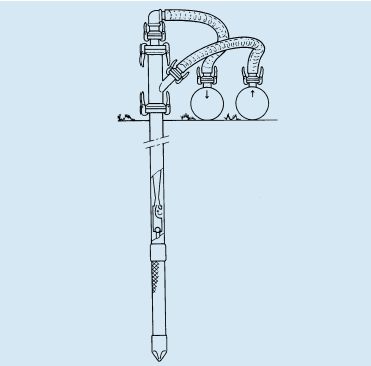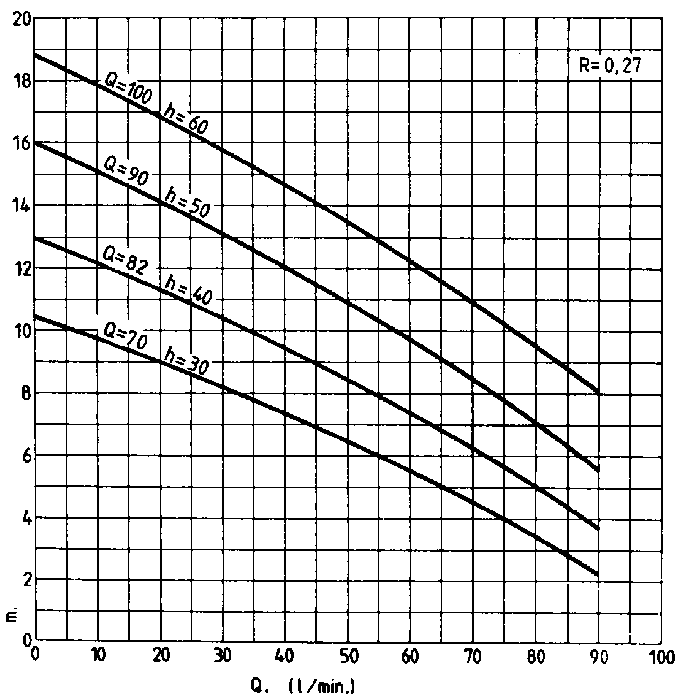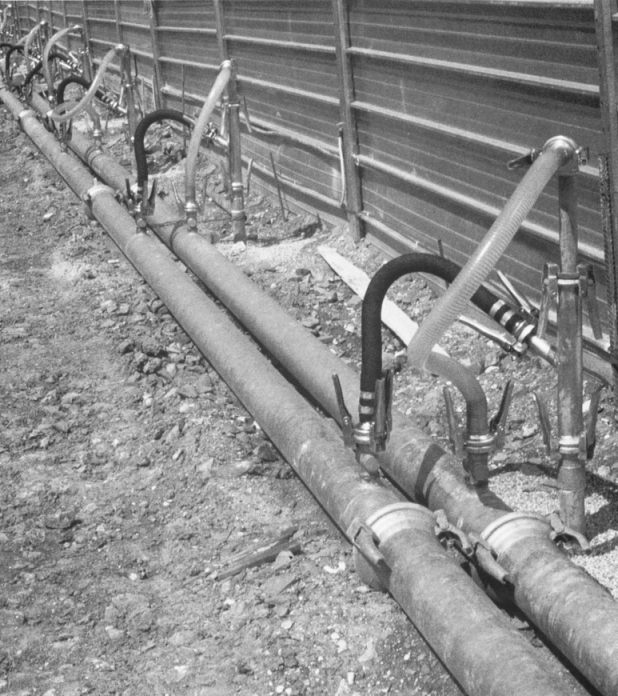
Wellpoint eductor system
In particular morphological and operational situations, it may be necessary to use lifting rods over 8 m long, and this leads to the exclusion of the traditional wellpoint system.
Unlike the wellpoint system, the eductor one does not exploit the atmospheric pressure to raise the water and therefore, theoretically, can suck water from any depth. It is based on the circulation of pressurized water through an ejector which, by accelerating the flow velocity, causes a depression in the area behind it (occupied by the wellpoint filter), and therefore the raising of the water flow rate:
– the supply pressure and flow rate;
– the diameter and geometric characteristics of the ejector;
– the suction depth.
The system, which in its schematic form is represented in the figure, is constructively characterized by the following differences compared to the wellpoint system:
1. The power supply unit must have high prevalence characteristics;
2. The suction circuit consists of two manifolds, one for the power supply and one for the suction;
3. The lifting rods consist of two concentric tubes, one external for the wellpoint filter and one internal for the ejector.
The installation, operation and hydraulic output of this system are considerably different from those of the wellpoint system’s and this entails greater complications in detecting the technical parameters necessary for the design and therefore the use of this system only for specific cases, generally in the presence of fine-grained soils.

In practice, this system, allowing the suction of water from depths greater than those of traditional wellpoint systems, it is used as an alternative to multi-stage stepped wellpoint installations. The diagrams show the characteristic curves of two ejectors characterized by different geometric dimensions (R is the ratio between the diameter of the nozzle and the diameter of the Venturi).




